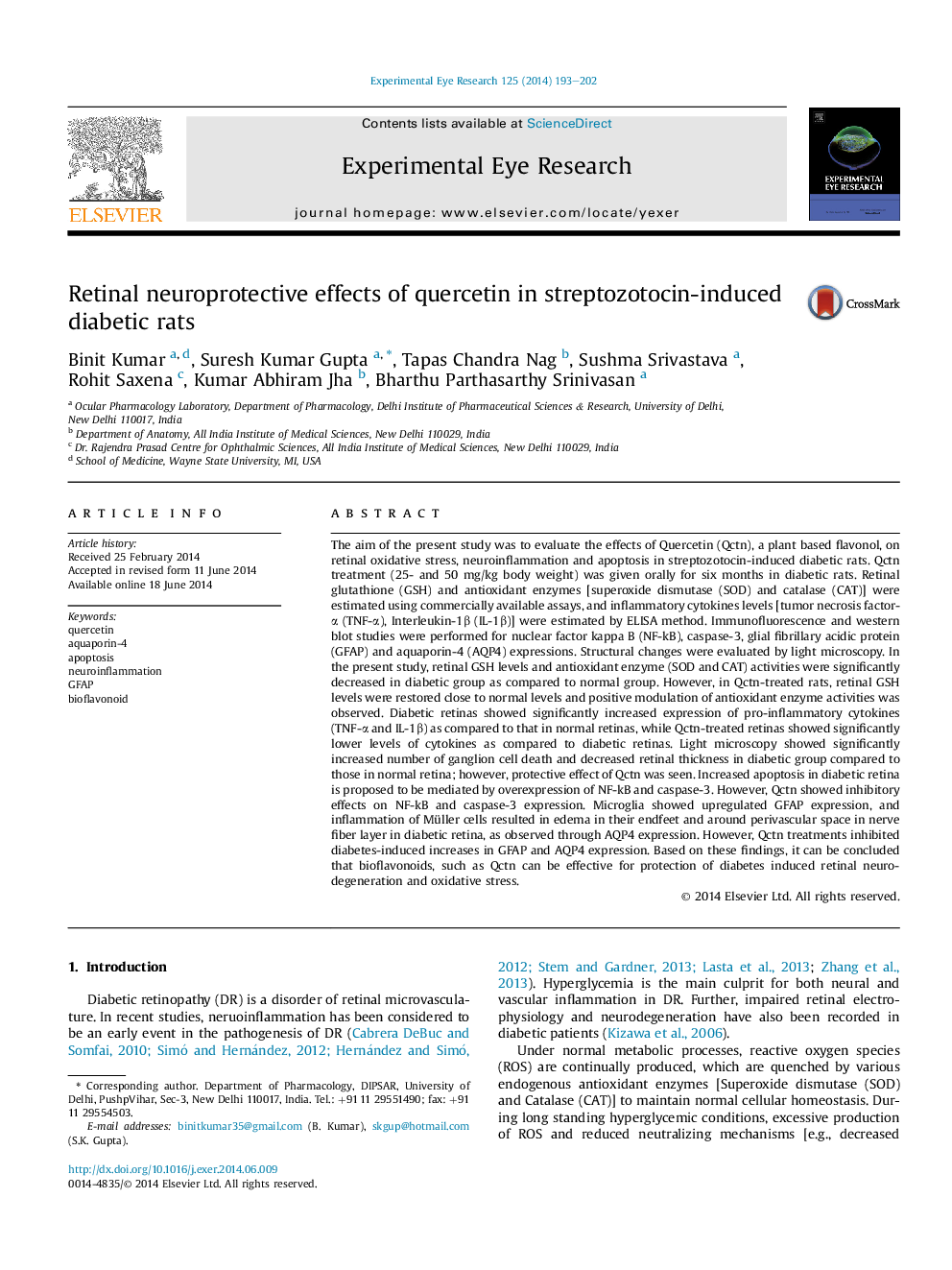| کد مقاله | کد نشریه | سال انتشار | مقاله انگلیسی | نسخه تمام متن |
|---|---|---|---|---|
| 6196964 | 1602597 | 2014 | 10 صفحه PDF | دانلود رایگان |
- Neuroinflammation is an early event in the pathogenesis of diabetic retinopathy.
- Quercetin (Qctn) possesses antioxidant and anti-inflammatory properties in diabetic retina.
- Qctn inhibits GFAP expression in Müller cells.
- Qctn prevents ganglion cell apoptosis in diabetic retina.
The aim of the present study was to evaluate the effects of Quercetin (Qctn), a plant based flavonol, on retinal oxidative stress, neuroinflammation and apoptosis in streptozotocin-induced diabetic rats. Qctn treatment (25- and 50 mg/kg body weight) was given orally for six months in diabetic rats. Retinal glutathione (GSH) and antioxidant enzymes [superoxide dismutase (SOD) and catalase (CAT)] were estimated using commercially available assays, and inflammatory cytokines levels [tumor necrosis factor-α (TNF-α), Interleukin-1β (IL-1β)] were estimated by ELISA method. Immunofluorescence and western blot studies were performed for nuclear factor kappa B (NF-kB), caspase-3, glial fibrillary acidic protein (GFAP) and aquaporin-4 (AQP4) expressions. Structural changes were evaluated by light microscopy. In the present study, retinal GSH levels and antioxidant enzyme (SOD and CAT) activities were significantly decreased in diabetic group as compared to normal group. However, in Qctn-treated rats, retinal GSH levels were restored close to normal levels and positive modulation of antioxidant enzyme activities was observed. Diabetic retinas showed significantly increased expression of pro-inflammatory cytokines (TNF-α and IL-1β) as compared to that in normal retinas, while Qctn-treated retinas showed significantly lower levels of cytokines as compared to diabetic retinas. Light microscopy showed significantly increased number of ganglion cell death and decreased retinal thickness in diabetic group compared to those in normal retina; however, protective effect of Qctn was seen. Increased apoptosis in diabetic retina is proposed to be mediated by overexpression of NF-kB and caspase-3. However, Qctn showed inhibitory effects on NF-kB and caspase-3 expression. Microglia showed upregulated GFAP expression, and inflammation of Müller cells resulted in edema in their endfeet and around perivascular space in nerve fiber layer in diabetic retina, as observed through AQP4 expression. However, Qctn treatments inhibited diabetes-induced increases in GFAP and AQP4 expression. Based on these findings, it can be concluded that bioflavonoids, such as Qctn can be effective for protection of diabetes induced retinal neurodegeneration and oxidative stress.
Journal: Experimental Eye Research - Volume 125, August 2014, Pages 193-202
